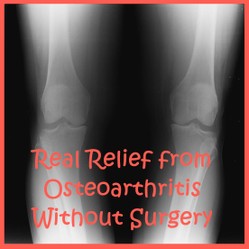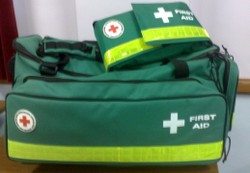The conjunctiva, the external membrane of the eyeball, is exposed to many sources of irritation and inflammation, though it is afforded a wonderful protection by the mobile action of the lids.
Only a small chink of the eye is exposed in a strong wind or when clouds of dust are met with. Micro-organisms are conveyed away by the mucous secretion, and by continuous blinking all foreign matter is conducted to the tear channel, by which it is removed from the conjunctival sac.
Conjunctival disease is more frequent in young life, particularly infancy and youth, than in later ages. It is more common in the dry sunny months than at any other time of the year.
Inflammations of the conjunctiva are classified as non-purulent and purulent.
The former belongs to the catarrhal type, and the latter to infections from pus forming germs generally associated with destructive changes by which even the existence of the eye is imperiled.
Symptoms of Catarrhal Conjunctivitis
These include smarting-sometimes amounting to actual pain-a sensation of sand or grit beneath the eyelids, the discharge of mucus, marked redness of the eyeball, and an excessive flow of tears.
Such symptoms are popularly assigned to a "cold in the eye," and lead to the use of many odd domestic remedies for their relief. It should be remembered that such remedies are liable to increase the inflammation and produce complications.
Moreover, eyes in such a state should be subjected to careful examination, to exclude the possibility that the inflammation is due to some source of local irritation in the conjunctival sac. When the conjunctiva alone is inflamed the greatest distension of the blood-vessels is apparent in the fold between the eyeball and the lower lid, as is revealed when the lower lid is drawn downwards.
This is a differential sign of much importance, for when the redness of an eye is not solely due to conjunctivitis, the injection of the blood-vessels is most marked around the cornea, indicating some injury or disease confined to that structure or dependent upon inflammatory changes in the ciliary region, and requiring the expert's immediate attention.
Treatment of Catarrhal Conjunctivitis
The chief point in the treatment of a catarrhal attack is cleanliness.
The eye should be washed three or more times a day with a lotion (consult your doctor or pharmacist), the lotion being either cold or warm according to the desire of the patient. When the smarting and discomfort are severe, much relief can be afforded by two or three drops of a solution of hydrochlorate of cocaine (4 per cent). The eye-bath is not to be recommended, not because it is harmful, but because it is ineffective.
It fails to remove the discharge and the mucous secretion, the presence of which tends to blur the vision. The best method of cleansing the eyes is to take a piece of absorbent cotton-wool, to soak it well in the lotion and gently cleanse the eyes thoroughly. At bedtime a boracic ointment should be smeared round the eyelashes to prevent them from adhering.
This ensures the discharge escaping during sleep, and prevents the trouble of having to bathe the lids in the morning before they can be opened.
Purulent Conjunctivitis
Purulent Conjunctivitis, when it occurs in infancy, is officially known as "Ophthalmia Neonatorum."
It is one of the most destructive diseases of the eye from the point of view of destroying the sight, and is due to gonococcal infection of the mother.
As a measure of prevention, purulent conjunctivitis in infancy was made a notifiable disease under the Infectious Diseases Notification Act.
Improvement as the result of preventive measures began with the method introduced by the French professor, Crede.
Immediately the child's head is born, the eyelids are wiped with dry cotton-wool, a fresh piece being used for each eye, and afterwards destroyed. Further cleansing of the eyes is resorted to as soon as the mother is settled. Precautions should also be adopted to prevent any of the water used in the first bath of the infant from getting into the child's eyes.
If any signs are present of a purulent discharge from the mother, a drop of a solution of nitrate of silver, two grains to the ounce, is instilled into the eyes of the infant. A few hours afterwards the eyes are reexamined, and then the further use of silver nitrate depends upon the signs present. If these indicate the collection of any discharge, the drops must be repeated. The precise diagnosis can be determined by a bacteriological examination of the mucous secretion.
The risks involved are mainly due to the peril of ulceration of the cornea. The intensity of the continued inflammation of the conjunctiva tends to arrest the nutrition of the cornea; ulceration of its deeper structure follows, and when this eventually heals the repair tissue is opaque and the sight, especially in the line of vision, is destroyed.
Pink Eye
This is a muco-purulent form of conjunctivitis which is very contagious.
It often occurs in epidemics, and may attack all the members of a household.
Its origin has been traced to a particular germ known as the Koch Weeks's bacillus. In severe cases there is much swelling of the conjunctiva and a profuse discharge, and, according to the intensity of the attack, it may be followed by ulceration of the cornea. Both eyes are usually involved. The treatment is based upon taking measures to destroy the infective organism. The eyes must be scrupulously cleansed with boracic lotion, and the lids being everted for the purpose, painted with a two-grain to the ounce solution of silver nitrate, made with distilled water. If the solution contains 20 per cent of glycerine, the pain of the application of the silver nitrate is said to be reduced; moreover, the latter is claimed to be more efficacious in its action.
You might also like
Painfree Arthritic Knees Without SurgeryAPOS therapy saved my life. I was on a fast downhill spin into disability, se...
First Aid: Would you Know What to Do?A medical emergency could happen at any moment. The question is whether you h...




 Your rash and itching problems may be Scabieson 03/10/2013
Your rash and itching problems may be Scabieson 03/10/2013
 Tickson 11/06/2011
Tickson 11/06/2011
 Vitamin Kon 10/10/2011
Vitamin Kon 10/10/2011
 Vitamin Eon 10/10/2011
Vitamin Eon 10/10/2011


Comments